A step-by-step guide to cooking the Chinese delicacy, edible bird nest, to maximize nutrition and achieve great taste.

When you open the menu of a big restaurant in China, chances are you’ll come across a small section listing extremely expensive dishes with exquisite names. For example, bird nest soup, shark fin stew, and braised sea cucumber. These dishes can cost hundreds of dollars for a small bowl, and they may look very plain, like a regular bowl of chicken soup.
Today I want to take you on a tour to a lesser-known part of Chinese cuisine by introducing one of the most popular food items for female beauty – Chinese bird nest.
What is Chinese bird nest
Chinese bird nest, or yàn wō (燕窝), is is one of the most expensive foods in the world, with a price of up to $2000 per kilogram (according to Wikipedia). The nests are made of the hardened saliva of the male swiftlet, a type of swallow found in many coastal caves of Southeast Asia.
Sounds super weird right?
Well, the cooked nest is almost tasteless and has the texture of jelly. It is often served sweetened and has quite a refreshing taste. When I cooked the nest for the first time in my US home, my husband thought it was super weird. But once he tasted the sweet soup, he actually enjoyed it and drank it all.
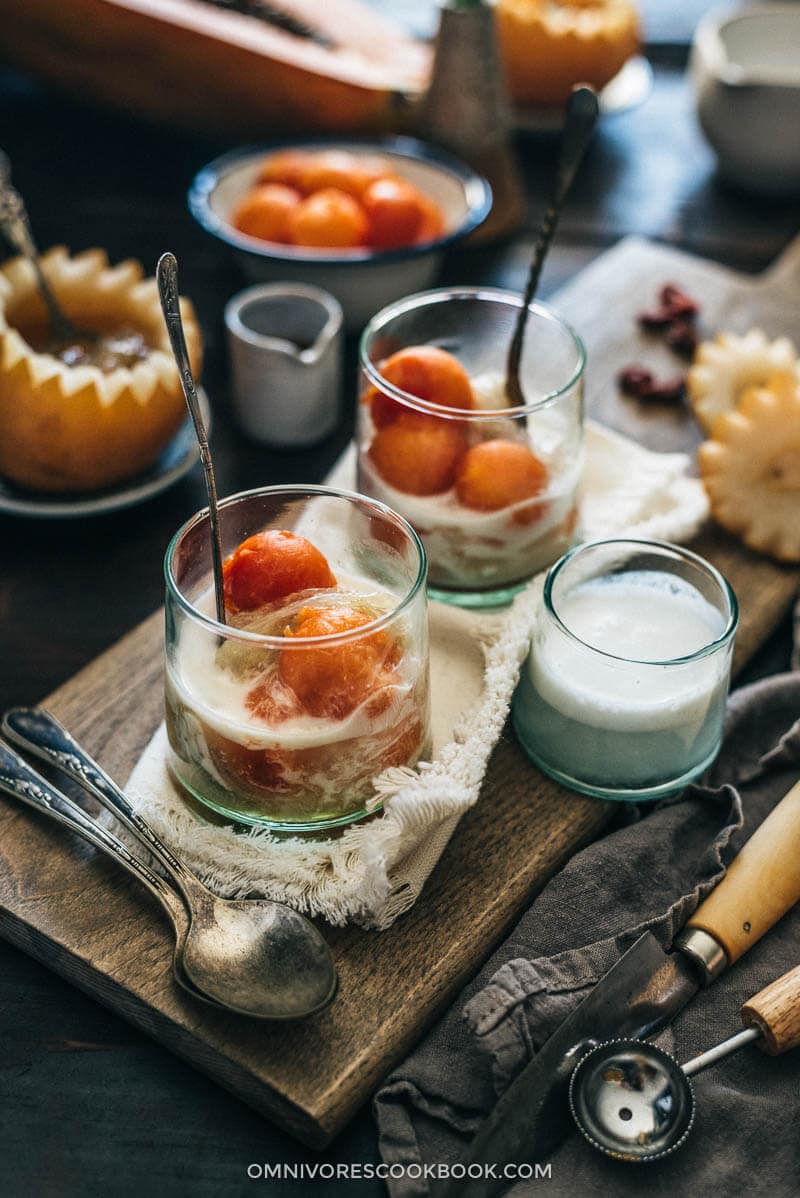
The culinary and traditional Chinese medicinal (TCM) use of edible swallow nest dates hundreds of years back, as a highly nutritious therapeutic supplement and a delicacy in Chinese cuisine.
Due to the extremely high protein content (about 70%), namely collagen, bird nest is prized by females for its ability to improve skin condition and release stress. So they will keep the last of their youth, as well as have a long and healthy life and a strong body. It has neutral energetic properties in TCM (not too cold or too warm), so it benefits people of all ages and is especially good for the lungs, kidneys, and stomach.
Moreover, eating swallow nest is regarded as a privilege in China. It’s a luxury like shark fin. In ancient times, only the emperor and nobles had access to it. So it’s a symbol of social status and wealth.
Lastly, the value of bird nest is high due to its rarity. When people are in a business meeting in a restaurant (as is Chinese tradition), they order precious items such as bird nest in order to display their sincerity. It is just like ordering an expensive bottle of wine in the Western world.
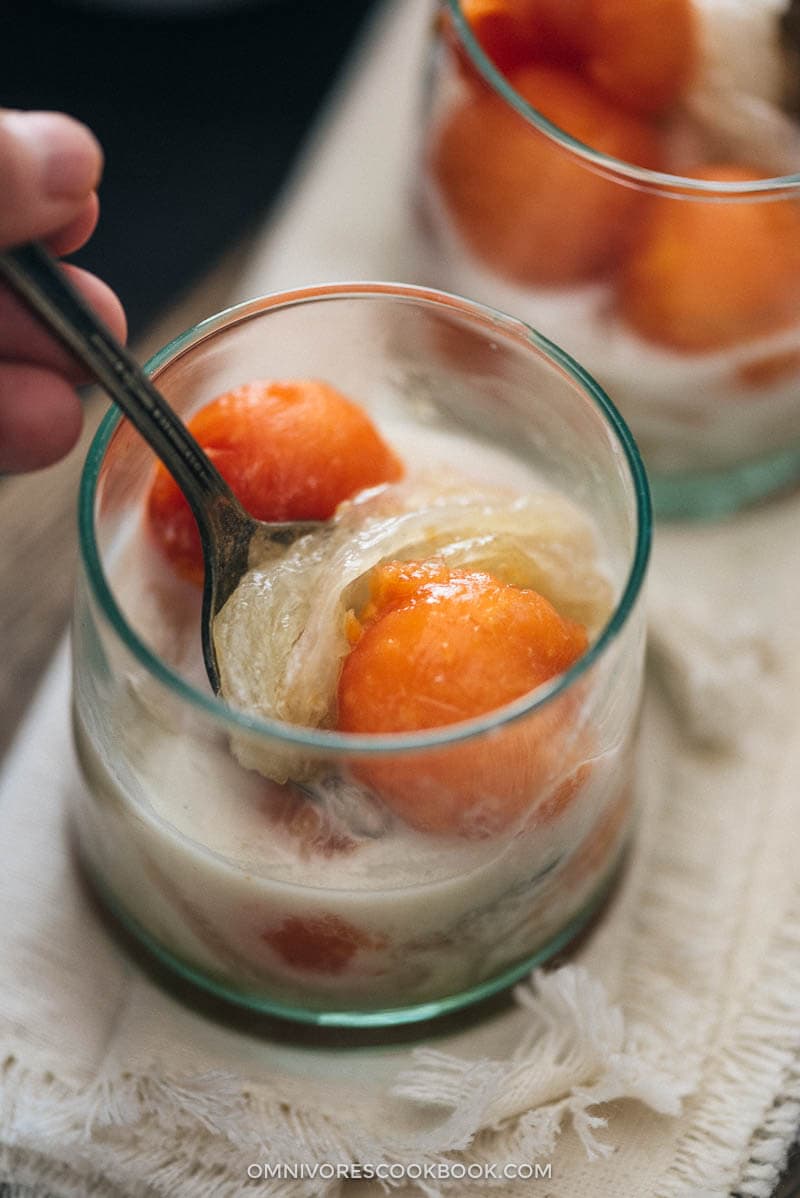
How to prepare and cook with edible bird nest
Edible bird nests come in different colors, ranging from white to dark brown, depending on the grading and the type of bird. When you purchase bird nest, always try to buy from reputable brands to make sure you’re getting a quality product.
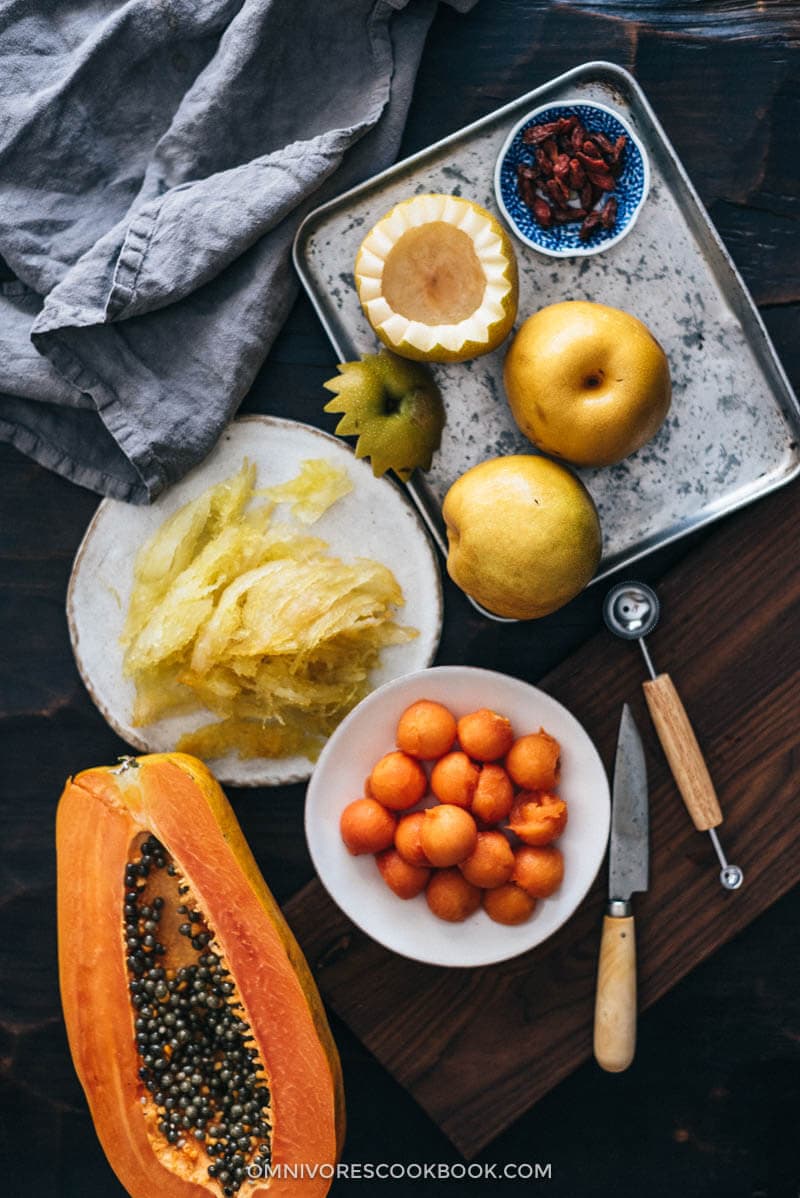
Preparing bird nest might look intimidating if you’ve never cooked with it before, since most products don’t usually come with instructions on the package. In reality it is extremely easy and requires just a few simple steps:
(1) Decide how much to serve.
Bird nest is preserved dry and it stays good for a month in the fridge once you open the package. It is important to decide how much you’re going to serve before preparing the nest, to ensure maximum freshness.
When you purchase bird nest, the nest usually comes in pieces and the package tells you how many servings it contains. For example, the bird nest I used said 1 ounce (28 grams) serves 4 people. It is a good serving size if you’re serving the nest restaurant style. If you’re using it for nutritional purposes and will consume it frequently (once or twice a week), you can serve smaller portions, about 1 ounce (28 grams) for 8 servings.
(2) Soak the edible bird nest with cold water, for at least 6 hours or overnight.
This step is very important. Do NOT use warm or hot water to soak the nest because it might destroy the delicate texture. Once the nest is fully hydrated, it expands a few times larger and has a slightly tough gelatinous texture. Use your hands to tear it into smaller pieces along the threads. Try to do it without breaking the threads so the finished nest will have a better texture.
When you’re soaking the nest you might notice a fishy smell. Don’t worry about it. The fishiness will disappear once the nest is cooked.
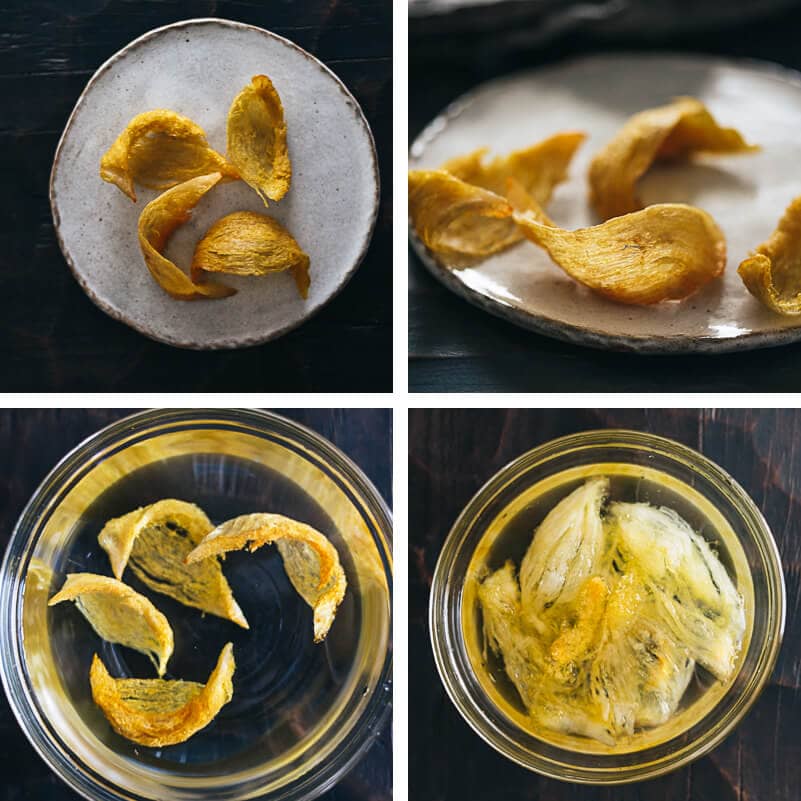
(3) Cook the nest using a double boiler.
Although bird nest can be served either sweet or savory, most people prefer to serve it sweet, as a dessert. To enjoy the bird nest, you should use minimal seasoning, just enough to eliminate the fishiness from the nest without masking its flavor.
Using a double boiler will preserve the most nutrition and ensure the nest is fully cooked and tender, without turning it into mush and melting it into the soup.
My favorite method is to cook the nest with Asian pear. The pear will magically eliminate all the fishiness from the nest and impart a refreshing sweet aroma. To make the appearance fancier, I carved the pears into small bowls and cooked the nest with a bit of water and goji berries. If you want an easier version, simply chop the pears into small pieces and add them into a bowl with the nest.
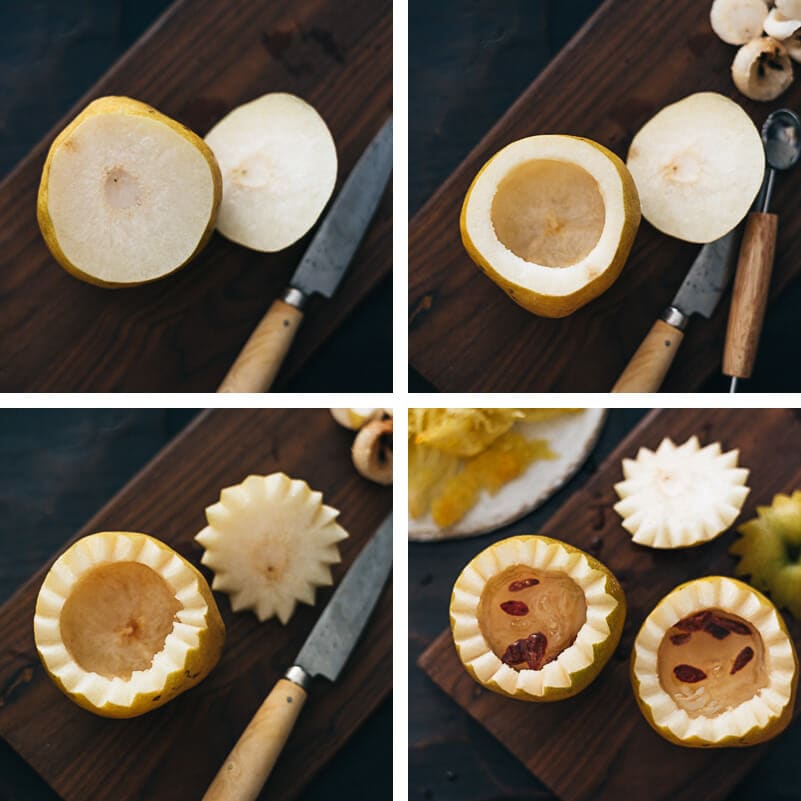
There are many ways to cook the nest, such as with different types of fruits and Chinese red dates. Once cooked, the nest has a light gelatinous texture that is tender and transparent. Serve the nest cold with syrup and milk, with more fruits if desired.
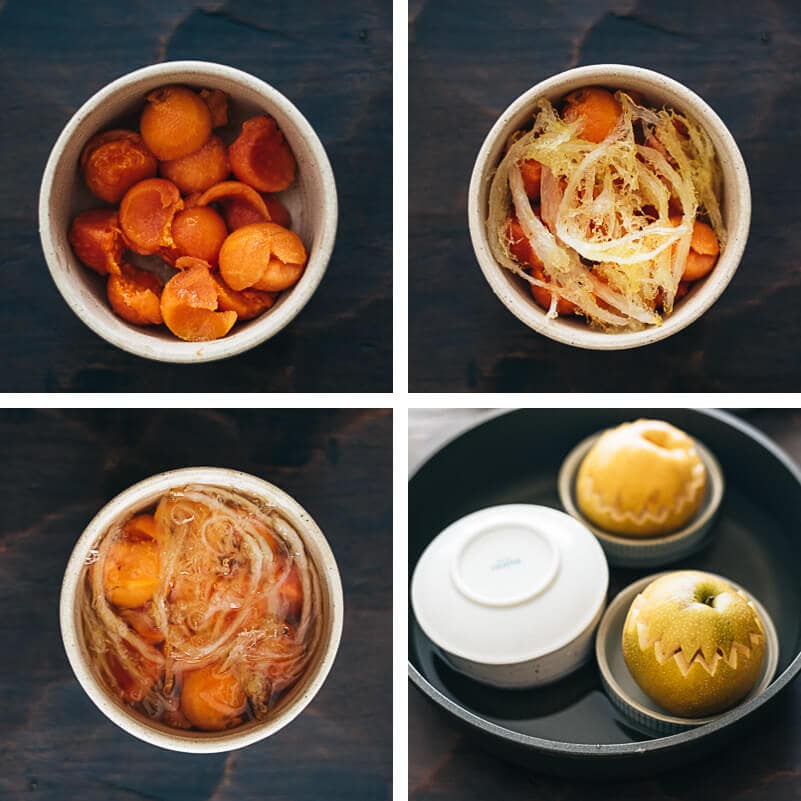
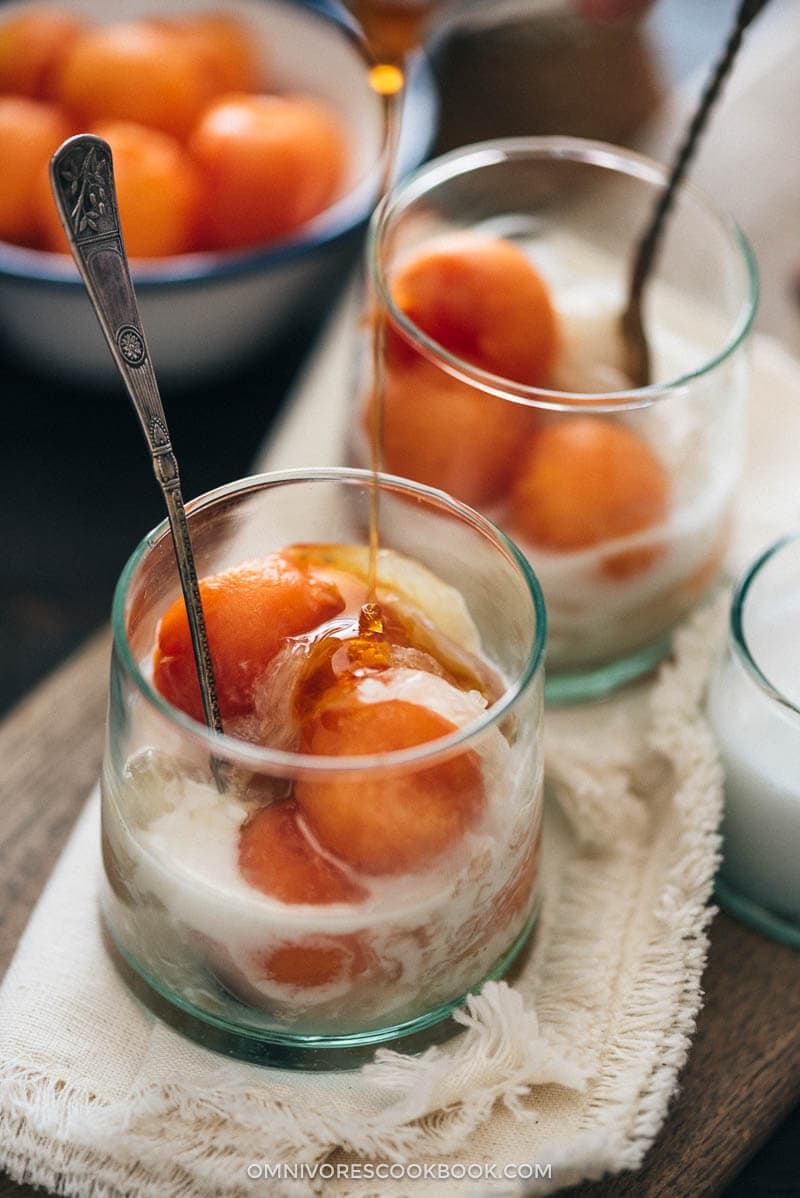
In the recipe below I teach you two of my favorite ways of cooking bird nest – Asian pear with rock sugar, and coconut milk with papaya.
If you give this recipe a try, let us know! Leave a comment, rate it (once you’ve tried it), and take a picture and tag it @omnivorescookbook on Instagram! I’d love to see what you come up with.
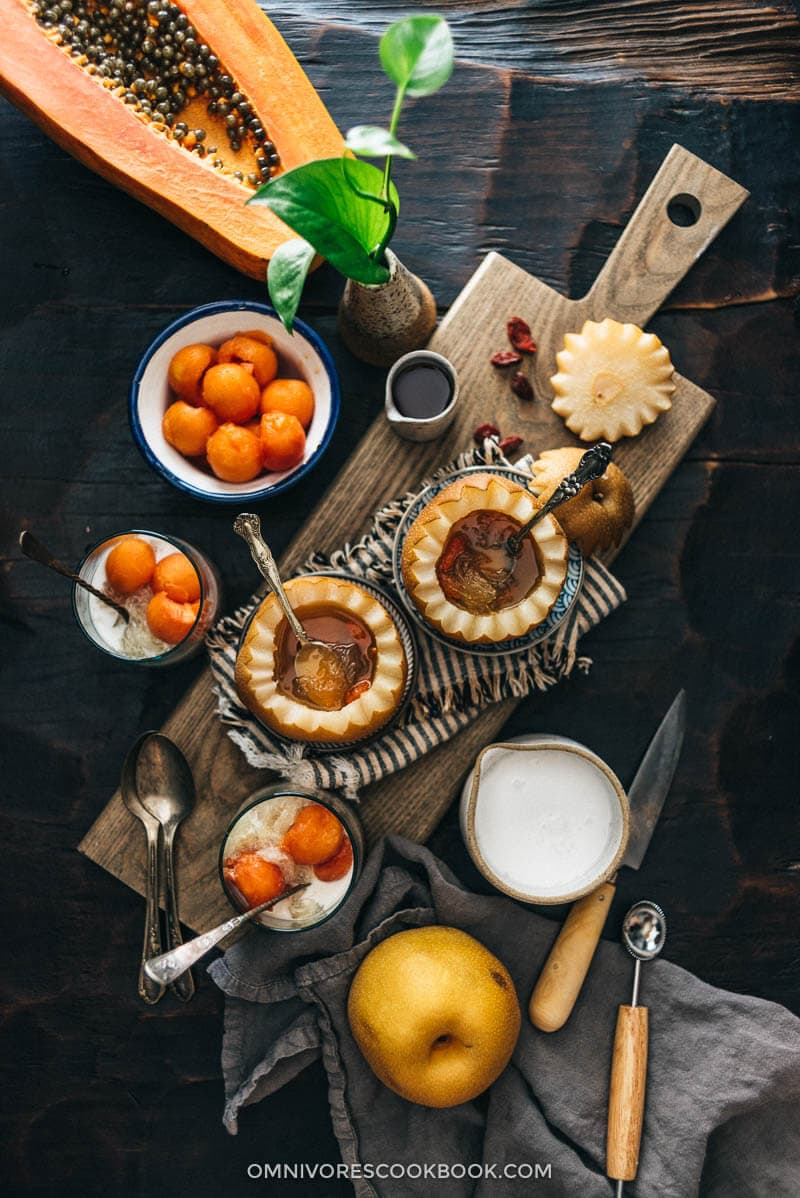
More delicious recipes that are good for your health
- Herbal Chrysanthemum Tea (菊花茶)
- Detox Herbal Vegetable Broth
- Chinese Herbal Chicken Soup
- Chinese Vegetarian Noodle Soup (中式素汤面)
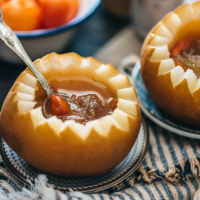
How to Cook Chinese Bird Nest (燕窝)
Ingredients
- 4 pieces bird nest 1 oz. / 28 grams
Braised bird nest in Asian pear
- 8 Asian pears
- 4 tablespoons goji berries
- 8 pieces small rock sugar or syrup
Braised bird nest with papaya in coconut milk
- 1 papaya cubed
- Syrup to taste
Instructions
- Add bird nest to a large bowl and 8 cups water to cover. Soak for a minimum of 6 hours or up to overnight. Gently rinse the nest with your fingers during the soaking and change the water once. If you see small feathers attached to the bird nest, carefully remove them with tweezers and discard them.
- Once the nest is soaked, gently tear it into smaller long pieces along the threads.
Braised bird's nest in Asian pear
- Cut each Asian pear into two pieces by cutting through the core about 1/3 of the way from the top. Use the larger piece as a bowl and the smaller piece as the lid. Use a spoon or melon scoop to scoop out the inner part of the bigger piece and make the pear into a small bowl. You can cut a zig-zag pattern if you like. It won’t affect the cooking.
- Divide up the bird nest and fill 2/3 of each pear with the nest. Add filtered water to cover, a few pieces of goji berries, and 1 piece rock sugar. Cover the pear with the lid you cut off earlier.
- Place the pear in a small bowl and transfer the bowl into a big skillet. Add water until it reaches halfway up the bowl.
- Cover the skillet and cook over medium high heat, until water reaches a boil and steam comes from the skillet. Turn to medium heat and let braise for 40 minutes.
- Once the bird nests are cooked, transfer the small bowls onto the kitchen counter with your oven mitts on. Let cool until it can be handled by hand.
- You can further sweeten it with syrup or honey, if needed. Serve the bird nest warm or at room temperature as a dessert.
Braised bird nest with papaya in coconut milk
- Add cubed papaya into 4 medium-sized bowls, about 1/2 cup papaya per bowl. Divide bird nest into 4 portions and add into the bowls on top of the papaya. Add filtered water to cover. Place a small plate on top of each bowl as a cover.
- Transfer the bowls into a big skillet and add water until it reaches halfway up the bowls.
- Cover the skillet and cook over medium high heat, until water reaches a boil and steam comes from the skillet. Turn to medium heat and let braise for 40 minutes.
- Once the bird nests are cooked, transfer the small bowls onto the kitchen counter with your oven mitts on.
- Once completely cooled, transfer the bird nest into serving bowls and discard the papaya and the liquid. Add coconut milk into bird nest and sweeten with syrup according to your taste. Serve at room temperature as a dessert.













Love this recipe! To me this is extremely exotic – I’m yet to try bird’s nest. You made it look easy and I just love, love the Asian pear variation.
Very interesting post! I was wondering about the environmental impact of harvesting the nests. Do the birds only use them once and then abandon them? Are only abandoned nests harvested? Are they harvested in the wild or are they “grown” in captivity? And is there any way of knowing how they nests were harvested at the time of purchase?
Tradition has its place where it does not lead to extinction. Otherwise, it is just culturally-accepted waste. The birds whose nests are “harvested” for birds nest soup are now endangered, because humans don’t wait for the birds to be finished using them before they take them. Having such an industry glorified for the sake of a food blog is just slightly repugnant, particularly as it does not outline the cost of this “tradition.” I’m all for sustainable predation; after all, I’m an omnivore. I am firmly against the taking of these nests while they are still fresh and new; yes, the birds build new nests and lay more eggs, but few are able to do so in time to raise a new generation.
I think I saw something with bird nest at Costco, but it was a drink? It made me very curious though! I’m so interested to try this, and didn’t realize how healthy, expensive or prized it is.
Yes there is a bird nest drink, although the one I’ve had contain some gelatinous chunks (the nest) in it. It is a popular thing in China but I had no idea Costco has it! I’ll definitely look for it the next time 🙂
Hiya Maggie, So glad you enjoyed your trip back home. We need to plan this better next time and try to meet up in Asia. Really like the cute way you served up the soup inside the Asian Pears. You don’t see it served up that cute in HK, thats for sure. Have you ever tried the red bird nests? I am certain you know “why” they are red ,but just wondering if you have ever tried it. Take Care